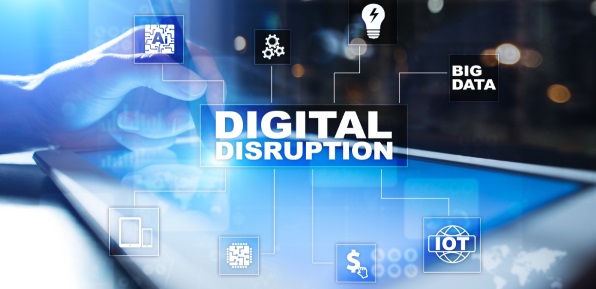Search posts by keywords:
Filter posts by author:
Related NEAT Reports
Other blog posts
posted on May 08, 2019 by Andy Efstathiou

NelsonHall recently attended the EY Global Analyst Summit in Boston. EY has grown its revenues at 8.5% CAAGR over the past five years, while investing heavily in technology and adapting its business model to become an IP-based services vendor rather than a provider of pure labor-based services.
Here I take a quick look at EY’s wavespace offering and how it is being used to provide value for large enterprises. EY believes that large enterprises have many good transformation ideas but fail at execution. To improve execution of transformation projects, EY uses Geoffrey Moore’s “Zones to Win” taxonomy, which defines four project types each requiring a different mix of resources to succeed. EY believes it provides three core competencies to solve the disruption challenge:
- Design of services
- Business model innovation
- Engineering.
EY’s goal is to drive large ($100m plus) transformation projects. EY’s wavespace network, launched in March 2017 with 15 centers, has now developed to a network of:
- Flagship centers, with a full range of services in each center. There are currently 20 flagship centers
- Satellite centers, with a sub-set of services and focused expertise. There are currently ~2x the number of flagships centers
- Pop-up centers, which are flexibly available. These are client/engagement-specific temporary centers focused on a specific challenge a client is facing, delivered from the cloud to an EY or client site.
Wavespace events at a center require pre-planning to pull in the right mix of:
- EY subject matter experts
- Client stakeholders with the domain responsibility and knowledge
- Third-party partners with expertise and IP.
Events run for one to three days, and EY wavespace delivers 700 events in the U.S. per year. As EY has developed its delivery model for wavespace, delivery has moved from a location-based event to an as-a-service offering independent of a physical place. This allows global organizations to develop their own customized offerings in a highly decentralized fashion.
The consulting services EY delivers are supported by:
- Proprietary IP, focused on tools to massively source data/capabilities online and harness these resources to enable small teams to apply them to specific projects:
- EmbrYonic: a cloud-based AI platform to analyze relationships between traditional and disruptive businesses. It tracks VC and M&A flows on 6.5m companies
- Transformation hub: a learning portal used by EY clients looking to implement technology products
- Cognistreamer: a collaboration platform for external and internal stakeholders to collaborate. Enables enterprises to crowdsource solutions to problems
- Storybook: a SaaS-based platform used by enterprises to understand how their customers move through their offerings.
- Digital Factory Layer: these are the capability modules within the wavespace centers:
- Research lab
- Design studio
- Innovation hub
- Showcase
- COE
- Delivery center.
Examples of how BFS clients are engaging with wavespace include:
- Citibank Canvas: Canvas is a crowdsourced beta testing community established to improve customer experience. Since the inception of Canvas, Citi has experienced an 11% increase in brand favorability
- Global universal bank: uses the research lab to continuously monitor customer sentiment and CUX best practices
- Global retail bank: long-term use of wavespace to transform processes in trade finance, F&A, CUX, capital and profitability, Finlab, data management, and analytics. The bank is using wavespace to digitize its $17 Bn legacy operations platform investments.
EY’s vision of digital transformation is focused on effectively bringing together large ecosystems of participants to solve enterprise challenges. EY has built its wavespace center offering to coordinate bringing the right participant at the right time into a workgroup. Clients who have engaged with wavespace have typically returned with ever larger engagement remits, as the growth in the centers and engagement activity demonstrates.
EY has been wise to maintain a narrow product focus (e.g. platforms such as SAP) and narrow client focus (large enterprises). Other vendors have set up sandbox centers like EY’s wavespace, but they retain sole or dominant presence in their centers. EY has taken a bold step, aggressively opening its centers to third-party participants. EY’s business model is moving from labor-based delivery services to orchestrator of services delivery. However, wavespace’s continued success will require maintaining managerial effectiveness over third parties who are outside of traditional control mechanisms.
